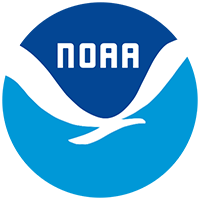Emergency Beacon Testing
Policy
The U.S. SARSAT Program Management Office has a formal Beacon Test Policy that dictates a non-distress beacon activation policy for all United States beacon owners. The policy details self-test mode, testing using a “Test Code” beacon, and testing with operational coded beacons. There are no restrictions on any user operating the “self-test” mode for their beacon as long as it is done in accordance with manufacturer’s instructions. For beacon activation using a “test-coded” beacon or an operational beacon, approval must be validated by a national sponsor (USCG, USAF, or NOAA) and approved by NOAA by submitting a 406 MHz Beacon Test Request Form.
For testing using the beacon’s self-test mode, no approval or coordination is required. Please follow your beacon manufacturer’s procedures to conduct the periodic self-test on your beacon, and look for the steady light, series of lights, or audible alert that your manufacturer describes should occur. During the test, the beacon is designed to go through a series of internal checks–including the final step of actually broadcasting a “test” signal to our satellites–without performing a “live test” by activating the beacon.
The COSPAS-SARSAT (C/S) System is an operational entity, and is not intended for live testing. Any time a beacon is activated other than in self-test mode, it sends out what is interpreted as a distress signal. This is why live testing of a beacon is not authorized unless the test has been validated by a national sponsor and approved by NOAA.
Why doesn’t the self-test signal get interpreted as a distress by the satellites or ground stations, and how do you know that your unit worked? Every beacon has a unique digital code. made up of bits (1’s and 0’s). In a self-test, the beacon alters the code by swapping two designated bits. The Cospas-Sarsat ground stations know to ignore the self-test, and stop the chain of events that normally occur to notify a Rescue Coordination Center (RCC). If the signal is sent without this change, you will not get the proper display or audible notification when conducting the self-test. If this happens, contact the manufacturer immediately. You will also want to contact one of the following, depending on your location, as you may have inadvertently broadcast a live signal: U.S. Coast Guard at 1-855-406-USCG (8724), U.S. Air Force Rescue Coordination Center at 800-851-3051, or Alaska Rescue Coordination Center at 800-420-7230. Note that you may be contacted by the RCC or another rescue agency that received the alert.
How does live testing impede the system? Due to the storage capacity onboard the satellites, live testing can present problems. For one, it may “step on” a signal from someone who is really in distress. Second, the newer message could push older messages out of storage, meaning that a real distress message sent before yours is now gone from memory in the satellite. Every distress signal received by a Low Earth Orbiting (LEO) satellite is stored for a period of time, to be broadcasted continually down to the Earth as the satellite orbits at 17,000 mph, in a process known as “store and forward.” Each ground station along the path of the satellite receives this message and relays it to the associated Mission Control Center (MCC). Then the appropriate RCC for the location or environment (such as a Coast Guard District) receives the alert signal and launches a rescue team accordingly. So live testing of a beacon would waste valuable resources, and will only be authorized under specific criteria outlined in the Beacon Test Policy.
For DOD agencies not located within the United States Area of Responsibility, including the continental United States, Alaska, Hawaii, and their surrounding waters, please provide the details of your beacon test (using the referenced test request form) to the MCC responsible for the location in which the planned test will occur. MCC contact information is located on this COSPAS-SARSAT Contact Lists web page under “Mission Control Centers.” Send a courtesy copy of the test details to the AFRCC at AFRCC.Console@us.af.mil, as they function as the worldwide DOD beacon notification point of contact.
With regards to the FAA directive (FAR 91.207), which includes the verification of sufficient signal from the ELT antenna, please refer to AC 91-44A. This Advisory Circular directs ELT inspections to use the self-test function of ELTs, direct connection to a dummy load, or the use of an antenna boot to prevent a distress signal to be radiated into space. If this is not possible, please submit a test request form to the Air Force Rescue Coordination Center with an explanation as to why a signal must be radiated into space.
If an ELT is inadvertently activated, or intentionally tested, and a signal is radiated into space, it should be shut off immediately and the nearest FAA tower or flight service facility should be notified of the event. Maintenance may be required before the ELT is returned to the “armed” condition.
For questions concerning the Beacon Test Policy, contact your respective national sponsor:
USAF Program POC: Air Force Rescue Coordination Center, AFRCC.Console@us.af.mil
USCG Program POC: HQ USCG CG-SAR Office of Search and Rescue, HQS-DG-M-406-TEST-Request@uscg.mil
NOAA Program POC: NOAA–SARSAT Program, beacon.test@noaa.gov
